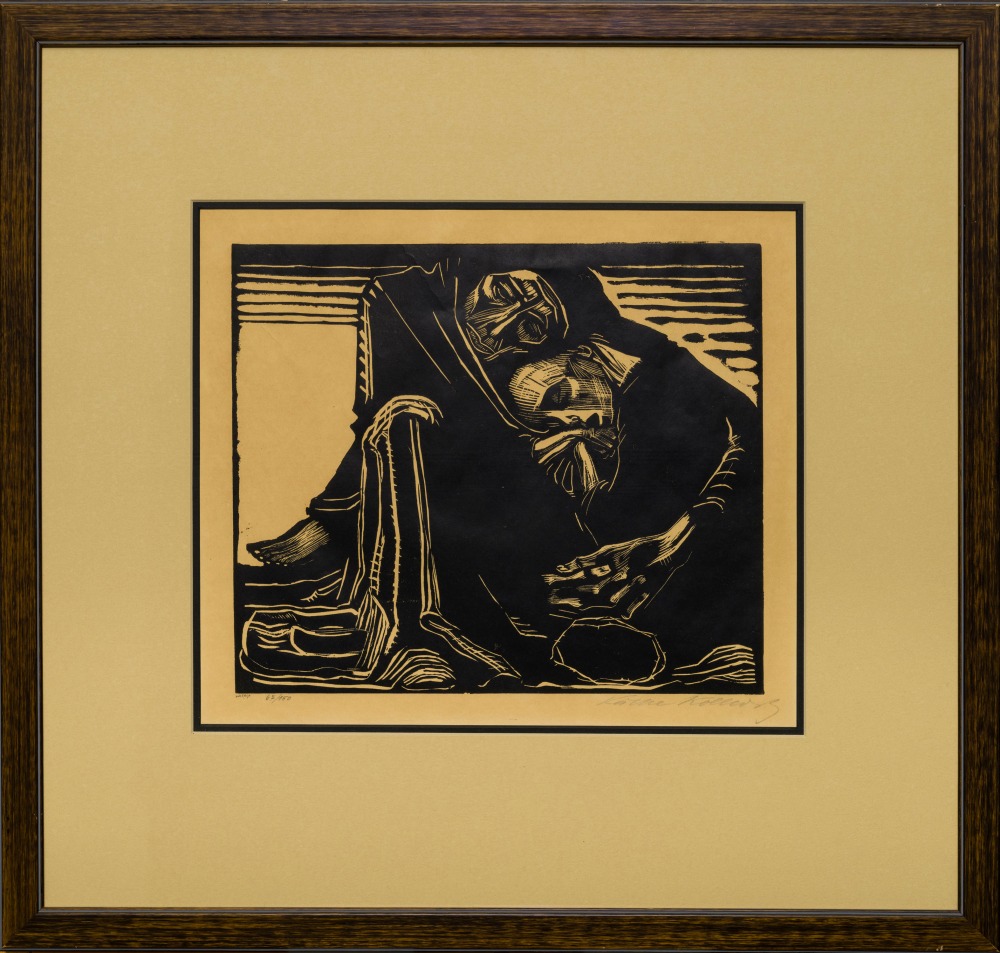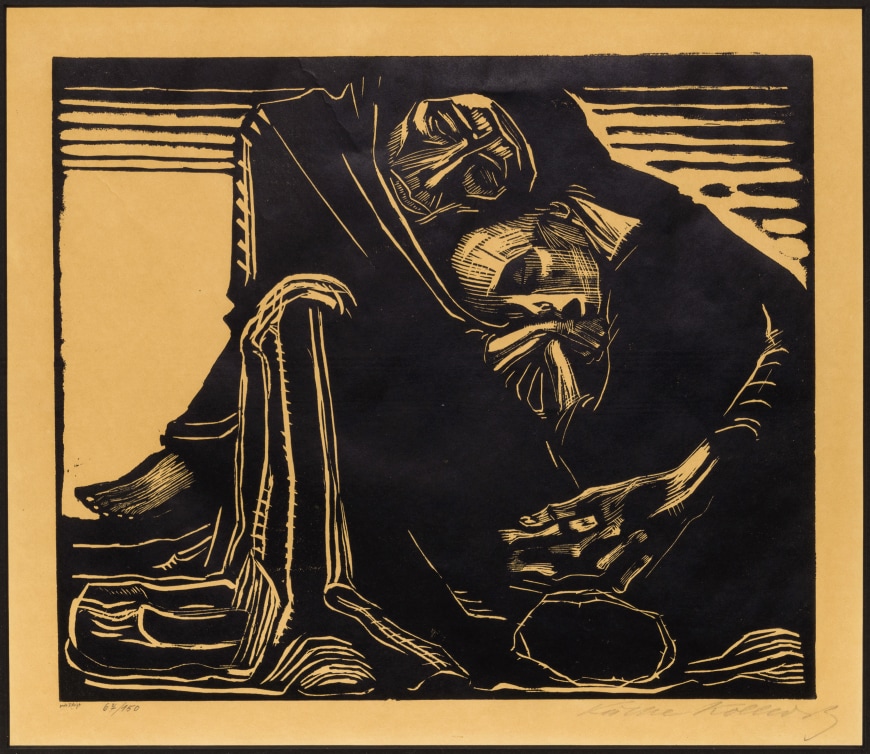-
Artworks
Käthe KollowitzDeath with a Woman in His Lap, 1921 (circa)1867–1945Woodcut print9 1/2 x 11 1/2 in
24.1 x 29.2 cmNumber 67 in an edition of 150 proofsThis painting is available to view at our Montreal gallery.SoldInscriptions
signed and numbered by the printer Fritz Voigt, ‘gedr. F. Voight 67 /150’ (lower left); signed, ‘Käthe Kollwitz’ (lower right)Provenance
Private collection, Town of Mount Royal, Quebec
Exhibitions
New York, The Metropolitan Museum of Art, Drawings and Prints: Selections from the Permanent Collection, 14 July - 19 October 2008.
A version of this woodcut, Death with a Woman in His Lap , 1921 (circa), is in the permanent collection of The Metropolitan Museum of Art, New York (purchased in 1923), the Käthe Kollwitz Museum in Cologne, and The National Gallery of Art, Washington DC (purchased in 1984).
In its description of this woodcut, the Käthe Kollwitz Museum explains:
The suicide of Käthe Kollwitz’ cousin Else Rautenberg in 1920 is, according to a diary entry, “the saddest event” for the artist in that year. Her exploration of this incident is reflected in this woodcut from 1921. The interpretation of death is given a completely new aspect in this work. Death is not depicted as a power that grips living beings in order to destroy them, but as a force that gives refuge to a person who – maybe after a long and painful struggle – has arrived at Death’s door. Shrouded in a wide cloak and held by Death’s strong hand, the dead woman can rest and find peace in his lap. Her head rests on his breast and her open mouth conveys the image of a final exhalation, of being allowed to let go. This image is underlined by the woman’s wooden shoes that have been removed (bottom left). A thin crown of thorns lies on the floor in front of the crouching figure. Death, with a solemn and benign expression on his face, has lowered his head almost affectionately to hers and sits contemplating and keeping watch. The symbol of the crown of thorns is a reference to Christ who, although innocent, was beaten and mocked, but did not defend himself.
The artist wrote to Arthur Bonus about this work: “Isn’t it the one with the crown of thorns at the bottom, left? My idea was that Death gently offers the woman refuge. The crown of thorns is left lying on the floor. Or, Death gently lays her to rest, but she no longer wears the crown of thorns.” (Käthe Kollwitz, in: Arthur Bonus, Das Käthe Kollwitz Werk).
Source: https://www.kollwitz.de/en/woman-in-the-lap-of-death-kn-165
________________________
Käthe Kollwitz devoted herself to depicting the social and political injustices she witnessed in Germany during the tumultuous periods surrounding World Wars I and II. Trained at the School for Women Artists in Berlin during the 1880s, she turned to printmaking early in her career, feeling that it was the medium most befitting social criticism. During her lifetime, she made two hundred sixty prints, including etchings, lithographs, and woodcuts, some of which were used as poster compositions for various social causes.
Her series continued a tradition of apocalyptic print cycles that, in Europe, reaches back to the sixteenth century. Rather than depicting its violence, however, Kollwitz chose to focus on the emotional damage inflicted on the home front, especially on the women who lose sons, husbands, and brothers. Kollwitz herself never recovered from the death of her son Peter who, only months after joining the German army, was killed in combat in 1914. Five years after his death, finding herself dissatisfied with lithography, Kollwitz experimented with the woodcut medium, hoping to find a print technique with which she could convey her grief, as well as strengthen and simplify her images. Searching for universal icons for the devastation imposed by war, she exploited the woodcut's inherent qualities to express the raw agony of war on the human psyche, slashing and gouging the wood to heighten the emotional impact of her images, and often silhouetting her black figures against the stark white smoothness of unprinted paper.
Source:
Harper Montgomery in "Artists and Prints: Masterworks from The Museum of Modern Art," edited by Deborah Wye (New York: The Museum of Modern Art, 2004) 93. Retrieved from https://www.moma.org/collection/works/69684?sov_referrer=art_term&art_term_slug=woodcut













